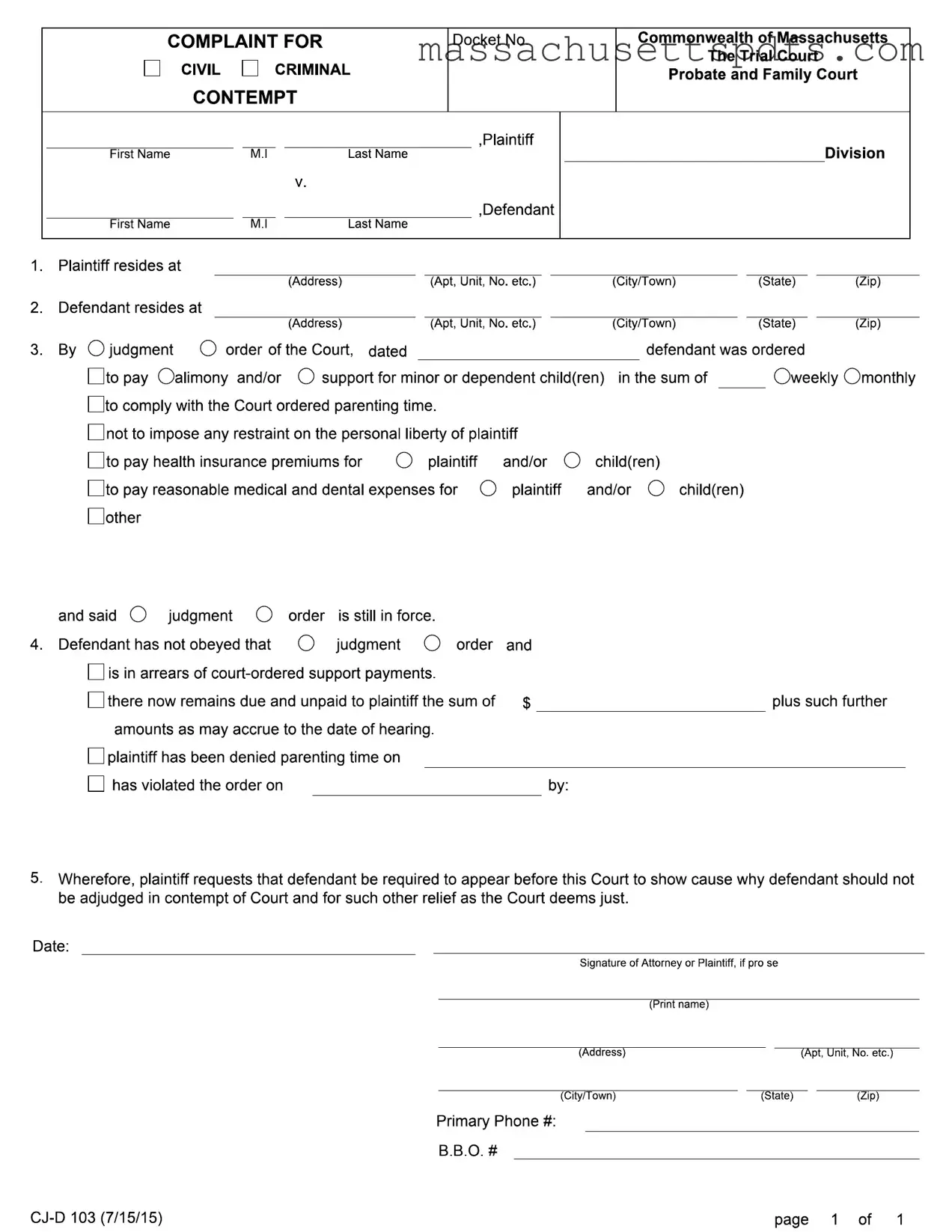Official Massachusetts Complaint For Contempt Template
The Massachusetts Complaint For Contempt form is a legal document used to request that a court holds a party in contempt for failing to comply with a court order. This form is crucial for individuals seeking enforcement of judgments related to alimony, child support, or parenting time. If you need to fill out this form, click the button below to get started.
Launch Editor Here
